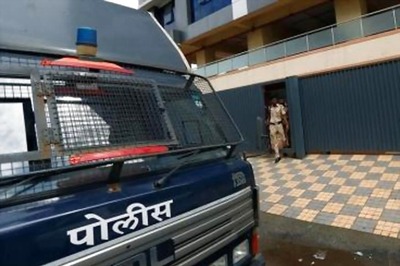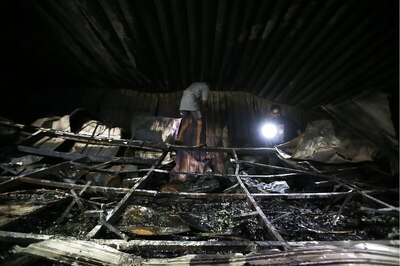
views
The demand for affordable housing in the metro, tier-1 and tier-2 cities is broadly based on three major factors — the presence of a strong middle class, the cost of housing, and the interest rate on loans.
What worked in favour of the Indian real estate industry in the early millennium was that more lower-income people graduated to the middle class, thanks to employment opportunities and the growing economy. As their income grew, their dreams grew bigger, and owning a home looked surreal.
But, the cost of property in cities is often high, and people cannot purchase homes on their own. They need someone to lend them money, and that brings housing loans into play.
The rate hike cycle
Homebuyers want to get the loan at a low interest rate so that they can repay their EMIs comfortably and the final cost of their property does not burn a hole in their pockets.
With fiscal stimulus like stamp duty waiver during the pandemic and lower interest rates in place, things appeared in favour of borrowers. In other words, they were not facing problems repaying their home loans.
Things started going south in May 2022 when banks began raising interest rates frequently, thanks to the RBI’s constant repo rate hikes. Borrowers who were paying an interest rate of 6.75 per cent in May 2022 were forced to pay 9 per cent or more interest by March 2023. They had options to repay a higher EMI for the same loan or extend their loan tenure. This, in one way or the other, pushed people away from affordable housing, because in plain sight they were unaffordable now.
A report by Anarock shows that home borrowers had been repaying almost 20 per cent higher EMIs for the past couple of years. This has resulted in an 11 per cent year-on-year decrease in overall sales to 20 per cent, as of the first half of 2023.
In broader terms, of the 2.29 lakh units sold across India’s top seven cities in the first half of 2023, the report says only 46,650 units or 20 per cent were affordable compared with 57,060 affordable homes that were sold out of 1.84 lakh units sold in the same quarter last year.
Fewer takers, fewer launches
With the decreasing demand for affordable housing projects, new launches, too, went down considerably in less than three years. In 2019, while over 50 per cent of the new residential units launched in the top seven cities were in the affordable segment, the share declined to 31 per cent in 2022.
Besides, increasing land prices are also forcing real estate developers to hike property prices, making affordable housing out of reach for middle-income people. This is also compelling developers to move away from cities and shift their base to the outskirts or smaller cities.
There are also factors such as layoffs — happening at a large scale globally, and in India — and the rising cost of construction that have affected the affordable home loan sector.
Layoffs and construction costs
Mass layoffs of middle-income borrowers in the recent past affected their loan repayment capacity considerably. Companies are cutting jobs for broadly three reasons — they are finding it difficult to make profits in the struggling global economy, higher tax rates, and disruption, thanks to technologies like artificial intelligence. For a borrower, who is already struggling to repay the loan owing to high interest rates, losing a job is a double whammy.
Developers can deliver projects on time, but they can’t cope with the increasing costs of construction materials. The Russia-Ukraine war has affected raw material supplies, leading to a rise in the price of construction materials.
Coupled with inflation, increased construction costs discourage developers from choosing affordable housing projects. As a result, they are inclined to develop premium and luxury projects which could easily adjust the increased construction costs for them.
According to the latest data on the Pradhan Mantri Awas Yojana (PMAY), provided by the Ministry of Housing and Urban Development, show that as many as 118.90 lakh houses had been constructed under the scheme till June 2023.
The ball, presently, seems to be in the regulator’s court — meaning if the repo rates were to stabilise or decrease, banks could follow suit and in turn, help borrowers take more loans to own a house. But, one can’t ignore the inflation factor, can one?
(The author is CEO and co-founder of Basic Home Loan)




















Comments
0 comment